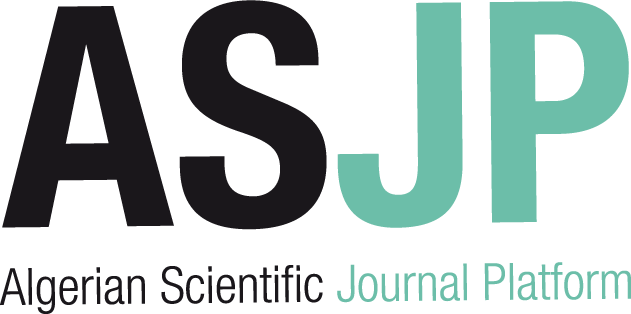| Titre : |
Handbook of computer programming with Python |
| Type de document : |
texte imprimé |
| Auteurs : |
Dimitrios Xanthidis (19..-....), Éditeur scientifique |
| Editeur : |
London ; New York ; Boca Raton : CRC Press |
| Année de publication : |
2023 |
| Autre Editeur : |
Boca Raton : Taylor and Francis Group |
| Importance : |
X, 619 p. |
| Présentation : |
ill. |
| Format : |
27 cm |
| ISBN/ISSN/EAN : |
978-0-367-68777-9 |
| Note générale : |
Références bibliographiques. - Index |
| Langues : |
Français (fre) |
| Mots-clés : |
Python (Computer program language)
Computer programming
Python (Langage de programmation)
Programmation (Informatique) |
| Index. décimale : |
004.43(035) Langage de programmation (Handbook) |
| Résumé : |
"From geometric primitives to animation to 3D modeling to lighting, shading and texturing, Computer Graphics Through OpenGL®: From Theory to Experiments is a comprehensive introduction to computer graphics which uses an active learning style to teach key concepts. Equally emphasizing theory and practice, the book provides an understanding not only of the principles of 3D computer graphics, but also the use of the OpenGL® Application Programming Interface (API) to code 3D scenes and animation, including games and movies. The undergraduate core of the book takes the student from zero knowledge of computer graphics to a mastery of the fundamental concepts with the ability to code applications using fourth-generation OpenGL®, as well as using WebGL® in order to publish to the web. The remaining chapters explore more advanced topics, including the structure of curves and surfaces, applications of projective spaces and transformations and the implementation of graphics pipelines. This book can be used for introductory undergraduate computer graphics courses over one to two semesters. The careful exposition style attempting to explain each concept in the simplest terms possible should appeal to the self-study student as well"-- |
| Note de contenu : |
Summary :
Chapter 1. Introduction
Chapter 2. Introduction to Programming with Python
Chapter 3. Object-Oriented Programming in Python
Chapter 4. Graphical User Interface Programming with Python
Chapter 5. Application Development with Python
Chapter 6. Data Structures and Algorithms with Python
Chapter 7. Database Programming with Python
Chapter 8. Data Analytics and Data Visualization with Python
Chapter 9. Statistical Analysis with Python
Chapter 10. Machine Learning with Python
Chapter 11. Introduction to Neural Networks and Deep Learning
Chapter 12. Virtual Reality Application Development with Python |
Handbook of computer programming with Python [texte imprimé] / Dimitrios Xanthidis (19..-....), Éditeur scientifique . - London ; New York ; Boca Raton : CRC Press : Boca Raton : Taylor and Francis Group, 2023 . - X, 619 p. : ill. ; 27 cm. ISBN : 978-0-367-68777-9 Références bibliographiques. - Index Langues : Français ( fre)
| Mots-clés : |
Python (Computer program language)
Computer programming
Python (Langage de programmation)
Programmation (Informatique) |
| Index. décimale : |
004.43(035) Langage de programmation (Handbook) |
| Résumé : |
"From geometric primitives to animation to 3D modeling to lighting, shading and texturing, Computer Graphics Through OpenGL®: From Theory to Experiments is a comprehensive introduction to computer graphics which uses an active learning style to teach key concepts. Equally emphasizing theory and practice, the book provides an understanding not only of the principles of 3D computer graphics, but also the use of the OpenGL® Application Programming Interface (API) to code 3D scenes and animation, including games and movies. The undergraduate core of the book takes the student from zero knowledge of computer graphics to a mastery of the fundamental concepts with the ability to code applications using fourth-generation OpenGL®, as well as using WebGL® in order to publish to the web. The remaining chapters explore more advanced topics, including the structure of curves and surfaces, applications of projective spaces and transformations and the implementation of graphics pipelines. This book can be used for introductory undergraduate computer graphics courses over one to two semesters. The careful exposition style attempting to explain each concept in the simplest terms possible should appeal to the self-study student as well"-- |
| Note de contenu : |
Summary :
Chapter 1. Introduction
Chapter 2. Introduction to Programming with Python
Chapter 3. Object-Oriented Programming in Python
Chapter 4. Graphical User Interface Programming with Python
Chapter 5. Application Development with Python
Chapter 6. Data Structures and Algorithms with Python
Chapter 7. Database Programming with Python
Chapter 8. Data Analytics and Data Visualization with Python
Chapter 9. Statistical Analysis with Python
Chapter 10. Machine Learning with Python
Chapter 11. Introduction to Neural Networks and Deep Learning
Chapter 12. Virtual Reality Application Development with Python |
|  |


 Ajouter le résultat dans votre panier Faire une suggestion Affiner la recherche
Ajouter le résultat dans votre panier Faire une suggestion Affiner la recherche






 004 Informatique. Science et technologie de l'informatique
004 Informatique. Science et technologie de l'informatique



